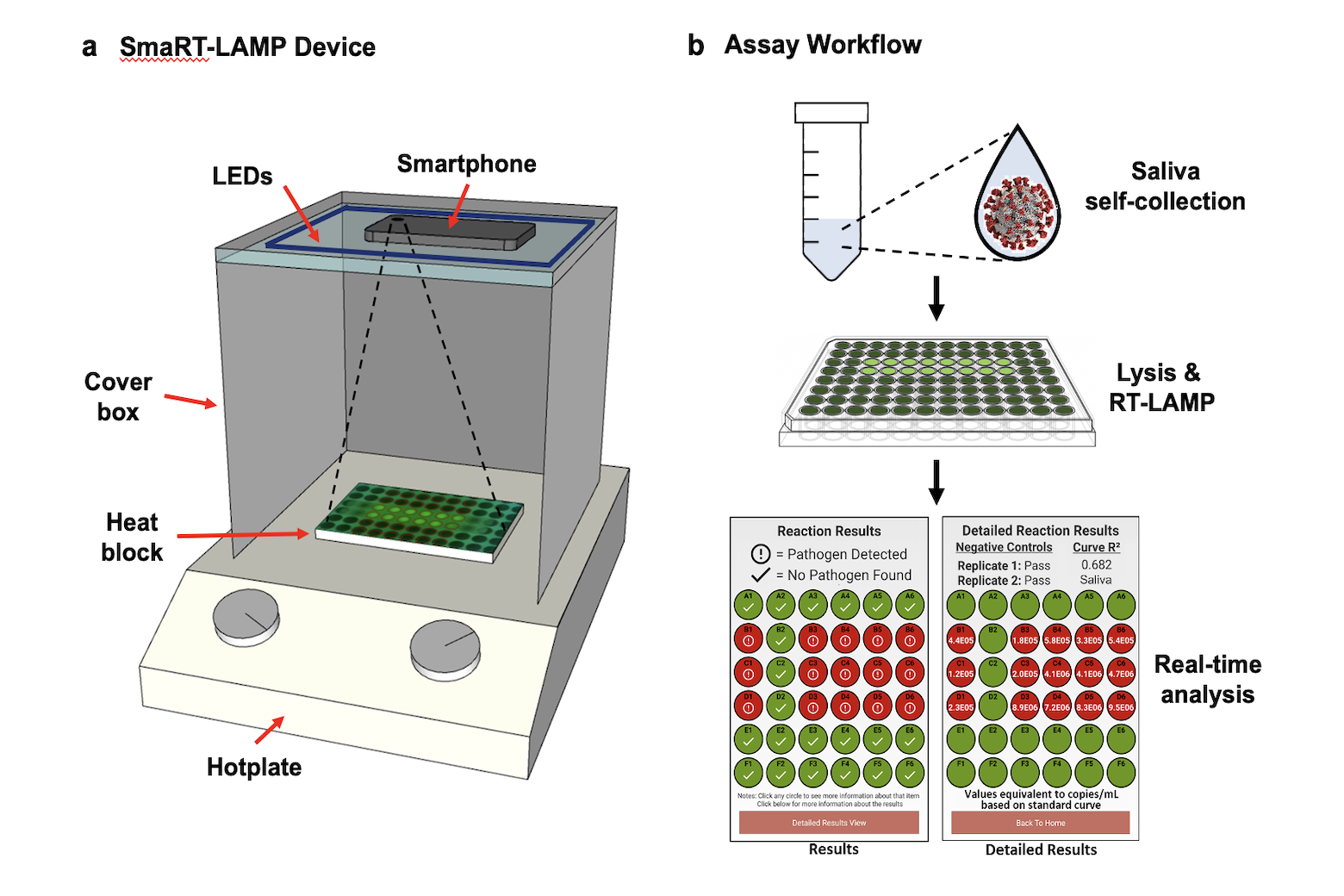There are strengths and weaknesses to the two most popular COVID-19 tests available right now.
With the rapid antigen test, you can get results in just 15 minutes. But each test costs around $10 to $12, and it only measures whether or not you’re contagious at the moment you take the test.
But the more reliable PCR tests are also more expensive, and take much longer to process. Only rarely do you get results on the same day.
What if you could combine the speed and ease of taking a rapid antigen test with the reliability of a PCR test, AND do it cheaper than either? Pretty soon, that’ll be available to everyone all over the world.
The test uses what’s called LAMP technology (loop-mediated isothermal amplification), something that’s been in development for over 20 years. Scientists at California’s UC Santa Barbara spent nearly a year-and-a-half during the pandemic trying to perfect it.

Michael Mahan, a microbiologist at the school, says they’ve done it, with the results peer reviewed and published a few weeks ago in the scientific journal JAMA Open Network.
“The vision is, you spit into a cup, you pour it into this magic mix that we developed that leads to the appropriate reaction, you put it on a hot plate, you turn your phone on, and you’re done. The app does everything else,” said Mahan. “What it does is it uses a smartphone’s camera to take pictures of the chemical reaction.”
All of that happens in about 25 minutes’ time, and is designed to not just detect the presence of COVID-19, but just about any other virus you can think of, including the flu. And it not just confirms the presence of the virus, but also tells you how strong the presence of the virus is inside you.
The prototype Mahan developed for the test years ago ran about $100, though most of the cost was the metal plate used to hold the cup of enzymes put on what’s basically a hot plate. It also needs LED lights and a cardboard box with a hole in the top so you can point your phone’s camera inside. But Mahan says when this hits the manufacturing stage, the whole device will run much cheaper.
“We think you can do it definitely for less than $20,” said Mahan. “That would be a one-time purchase.”
Each test itself costs less than $7 right now, and he says that too can fall in price as it becomes mass manufactured, down to around $2 to $3 a test.
“The vision was to have something in resource-limited nations,” said Mahan. “PCR to them was never going to happen. It’s just too expensive. We wanted to do something for those nations that are struggling.”
That’s why everything about the tests, down to the mobile app available on Android right now, is open source and available to everyone.
“We’ve patented nothing,” said Mahan. “We want this out there. We want it used.”
Mahan says testing detected every variant of COVID-19 that was used (the testing was done before Omicron), as well as two strains of flu with nearly perfect accuracy.
Now, the question is how fast it can become available, in countries with limited scientific and economic resources, as well as your own home. Mahan says he doesn’t know the answer to that, but he’s hoping it’ll happen soon.
“That’s why we provided everything open source,” said Mahan. “The code is there for the app. There’s a recipe.”
But that end of things, the manufacturing, “it’s not what I’m good at,” he said.
“However, follow the money. There’s a huge, huge demand now,” he added, making clear he hopes companies will start producing these in mass. “There’s a huge demand for home-based testing for lots of things. It’ll work in your home.”
“We think the age of telemedicine, it’s the dawn of a new age,” said Mahan. “We have the technology now to do a lot of things at home that weren’t available before.”








